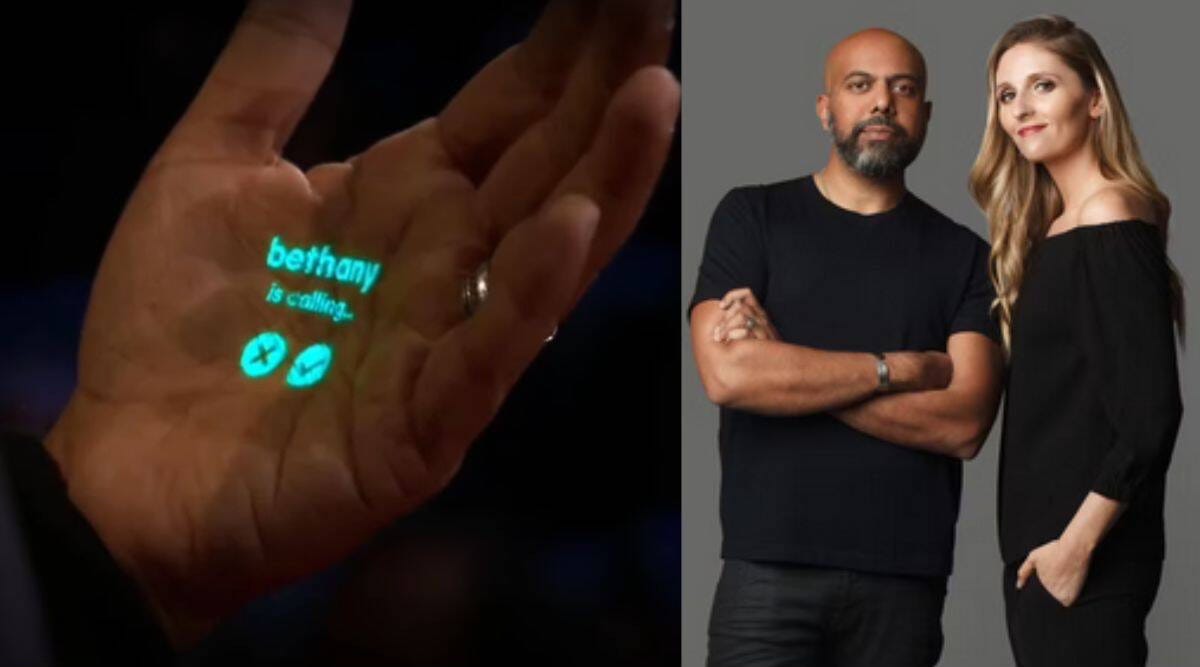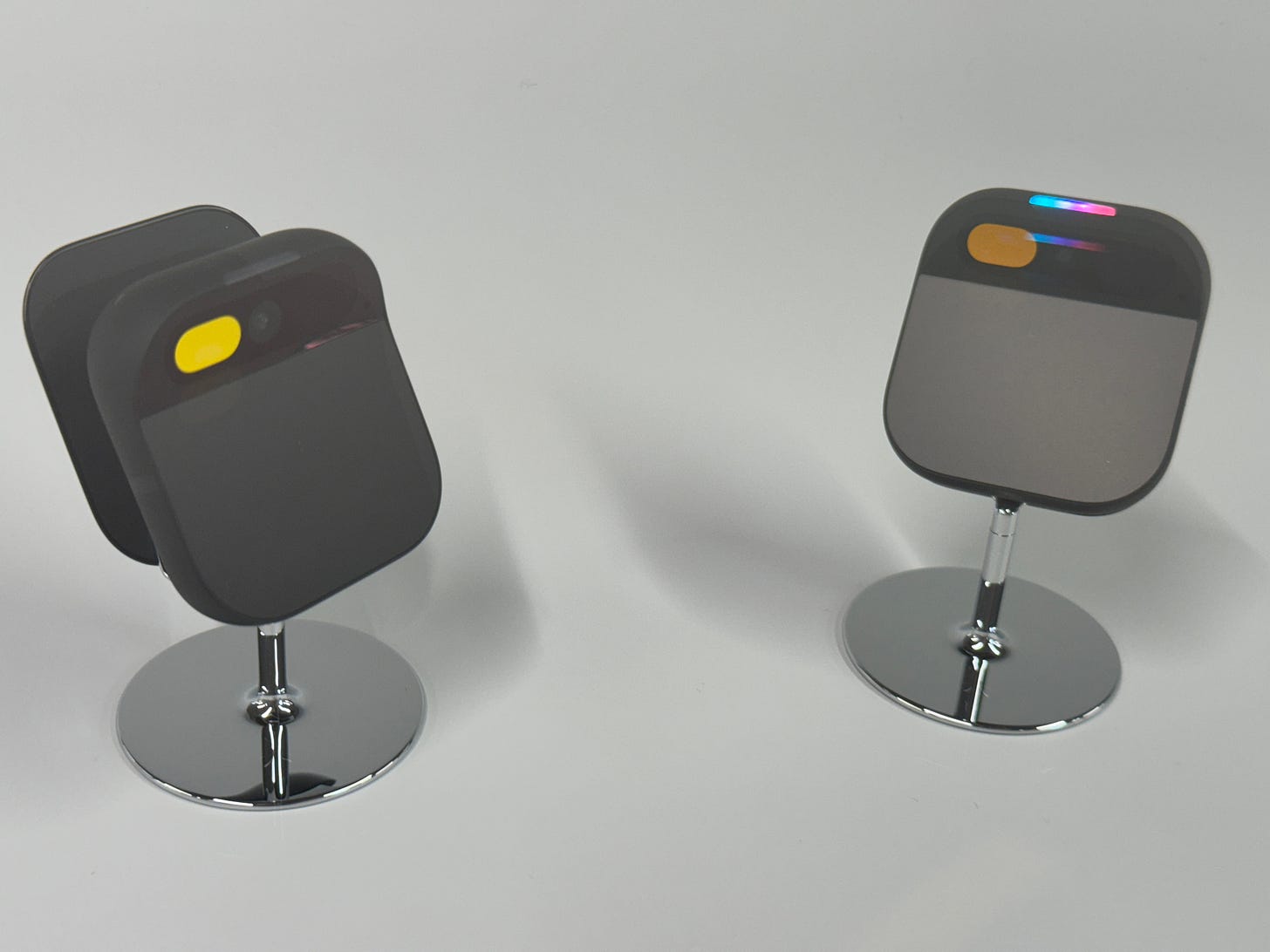In last month’s ‘AI: Feeling our way to AI UI/UX’, I made the point:
“In the ten months since OpenAI’s ‘ChatGPT moment’, and after 200 billion plus in AI Infrastructure investments, the world is still trying to figure out how AI will be used at scale in all its many possible incarnations. And so many ways for users to interact and experiment, ‘UI/UX’ in silicon valley speak.
These include of course the ChatGPT style ‘ChatBot’, with variations coming in celebrity ‘Smart Agent’ flavors by Meta and others. “
“Apple is hard at work as outlined here and here, finding bottom up ways to integrate AI into its many devices, apps and services, including its next generation Vision Pro platform in early 2024, even at its ‘historical bargain’ price of $3499. Recent reports have their AI head ‘JG’ looking hard at everything from Siri, to search delivered by Apple products using both its own technologies and Google.”
“But as Sam Altman of OpenAI himself said not too long ago, AI has yet to find more ‘Product-Market-Fit’, silicon valley speak for user interactions and experiences that can be delivered via software and hardware at scale, and then monetized with a combination of advertising, transactions and/or subscriptions. “
Now, as the annual anniversary of OpenAI’s ChatGPT comes up, and the company gets set to launch ‘GPTs’ by and for everyone via an Apple iPhone like App Store, the race is definitely on to invest aggressively on the form factors to best deliver AI applications and services. It’s the Holy Grail Box no. 6 on my AI Tech Wave chart below.
This comes up as Humane AI, a company founded several years ago by a whole bunch of ex-Apple designers and engineers, and backed by OpenAI’s Sam Altman and other tech/VC luminaries, launched its AI driven lapel pin last week to the world. As the NY Times explains in an illuminating origin story/profile piece:
“They’re billing the pin as the first artificially intelligent device. It can be controlled by speaking aloud, tapping a touch pad or projecting a laser display onto the palm of a hand. In an instant, the device’s virtual assistant can send a text message, play a song, snap a photo, make a call or translate a real-time conversation into another language. The system relies on A.I. to help answer questions (“What’s the best way to load the dishwasher?”) and can summarize incoming messages with the simple command: “Catch me up.”
Here’s a ten-minute video demo of the $700 product, with a $24/month T-Mobile powered subscription, by the founder couple Imran Chaudhri and Bethany Bongiorno. I’d recommend watching the whole thing. At the very least it’ll give you an idea of the kinds of things being tried with AI as it goes ‘multimodal’, which is to say it’s augmented by Voice, ‘Sight’, and tiny projector that flash bits of information and a dash of UI in the palm of your hands.
As Techcrunch explains in their take of the AI pin demo:
“For his part, Chaudhri frames the company’s story as one of S-curves – 15-year cycles of technology that form the foundation for, and ultimately give way to, what’s next. “The last era has plateaued,” he tells the room, stating that the smartphone is “16 years old” — though this, too, appears to be a winking dig at his former employers, whose first iPhone arrived in 2007.”
“He frames Humane’s first product as “a new way of thinking, a new sense of opportunity.” It’s an effort, he adds, to “productize AI.” The in-person presentation is decidedly more grounded than earlier videos would lead you to believe. It’s true that the statements are still grandiose and sweeping, contextualizing the lapel-worn device as the next step in a computing journey that began with room-size mainframes, but the conversation becomes a touch more pragmatic when the device is laid out before us.”
Sweeping words, grounded by using the AI lapel pin to figure out the amount of protein in a handful of almonds.
As I’ve discussed in some detail already, we are indeed on an AI journey that’ll at least take a decade to figure out how to deploy AI services to billions around the world using smartphones and other devices that are increasingly capable to run both what I call ‘Big and Small AI’ at the ‘edge of the network’. Or in and around our persons, be they ‘wearables’, computers, smartphones, and other types of devices.
And the point of these efforts is that as AI Software blends with traditional software, a subject that is important to understand at a high level, AI services are likely to be delivered as personalized services via so-called AI ‘Smart Agents’, assistants and companions. As no less than Bill Gates explains it:
“To do any task on a computer, you have to tell your device which app to use. You can use Microsoft Word and Google Docs to draft a business proposal, but they can’t help you send an email, share a selfie, analyze data, schedule a party, or buy movie tickets. And even the best sites have an incomplete understanding of your work, personal life, interests, and relationships and a limited ability to use this information to do things for you. That’s the kind of thing that is only possible today with another human being, like a close friend or personal assistant.”
“In the next five years, this will change completely. You won’t have to use different apps for different tasks. You’ll simply tell your device, in everyday language, what you want to do. And depending on how much information you choose to share with it, the software will be able to respond personally because it will have a rich understanding of your life. In the near future, anyone who’s online will be able to have a personal assistant powered by artificial intelligence that’s far beyond today’s technology.”
“This type of software—something that responds to natural language and can accomplish many different tasks based on its knowledge of the user—is called an agent. I’ve been thinking about agents for nearly 30 years and wrote about them in my 1995 book The Road Ahead, but they’ve only recently become practical because of advances in AI.”
“Agents are not only going to change how everyone interacts with computers. They’re also going to upend the software industry, bringing about the biggest revolution in computing since we went from typing commands to tapping on icons.”
I’ve been working and waiting too on this world of ‘smart agents’, starting with General Magic in the mid-1990s, one of the first companies trying to do this ‘AI stuff’.
A bit too early as it turned out. Also founded by a bunch of top of their game Apple engineers and designers. That’s Apple software luminary Andy Hertzfeld above, who helped give the world the first ‘Macintosh’, later just ‘Mac’ comuters. Many of General Magic alums went onto to give the world everything from iPods to Android devices. But a lot of tech hardware and software, not to mention telecom networking had to come together to make it all happen.
Which brings us to today, with another group of ex-Apple engineers trying something new with this AI stuff. Hopefully not as early as General Magic.
Humane AI’s efforts can be viewed skeptically 'a smartphone without a screen’, or something that could give us insights into what works and doesn’t work. And iterate things to the next level. I’m in the latter camp. And eager to try these new ways to find AI ‘product-market-fit’ going forward.
It’s early days in a long journey. Stay tuned.
(NOTE: The discussions here are for information purposes only, and not meant as investment advice at any time. Thanks for joining us here)








